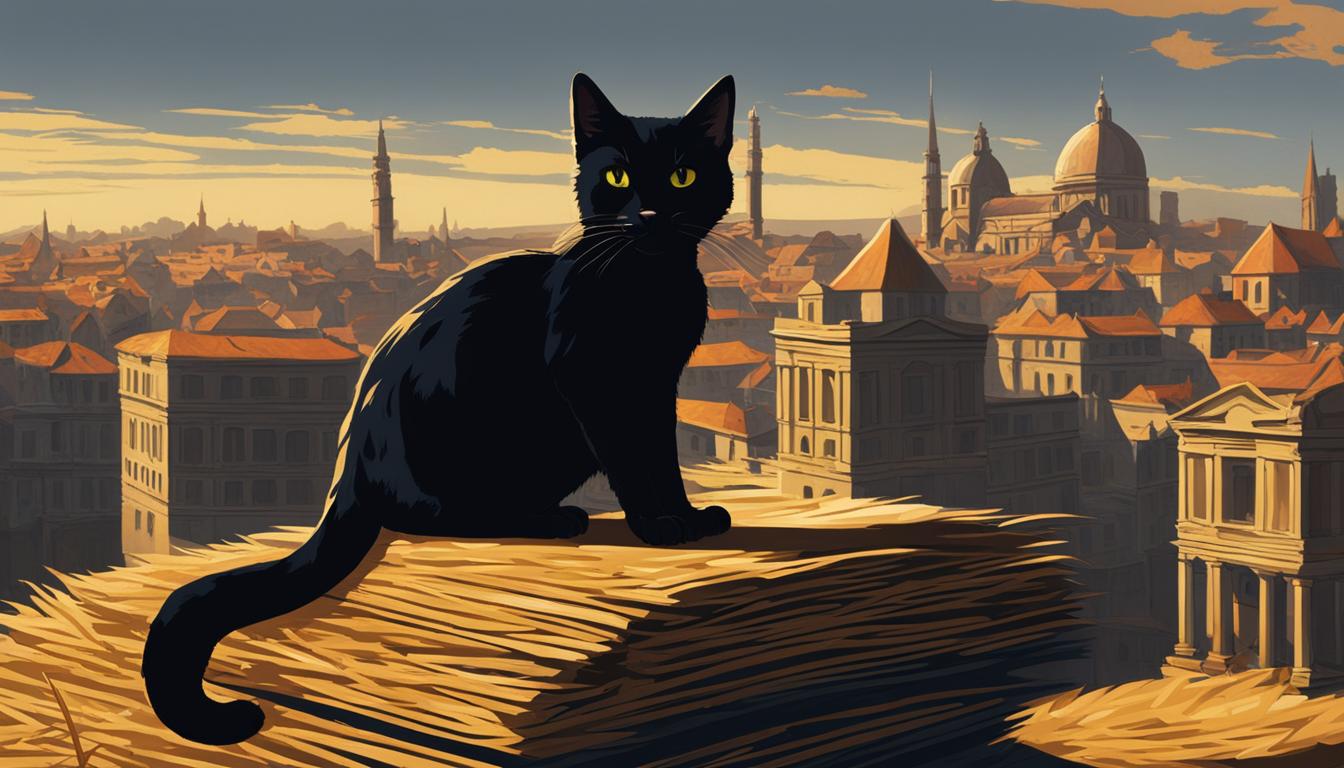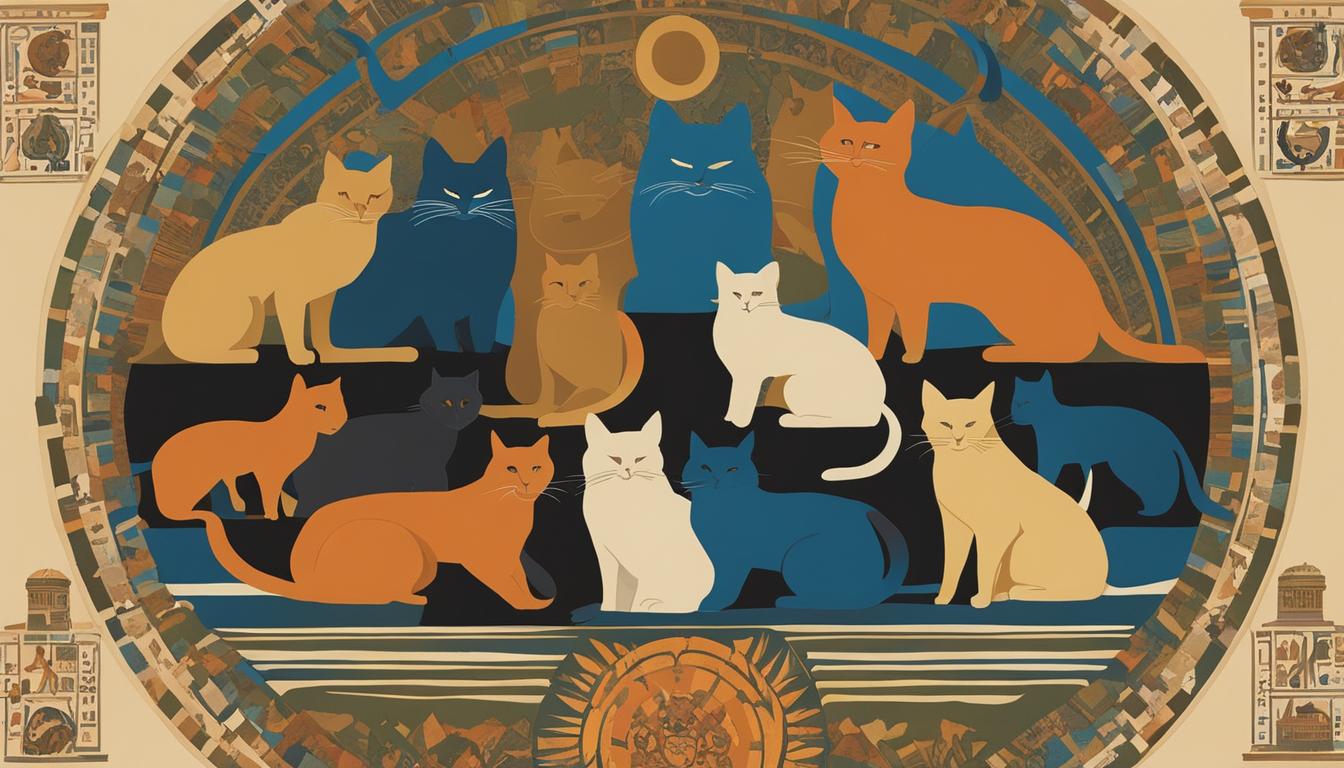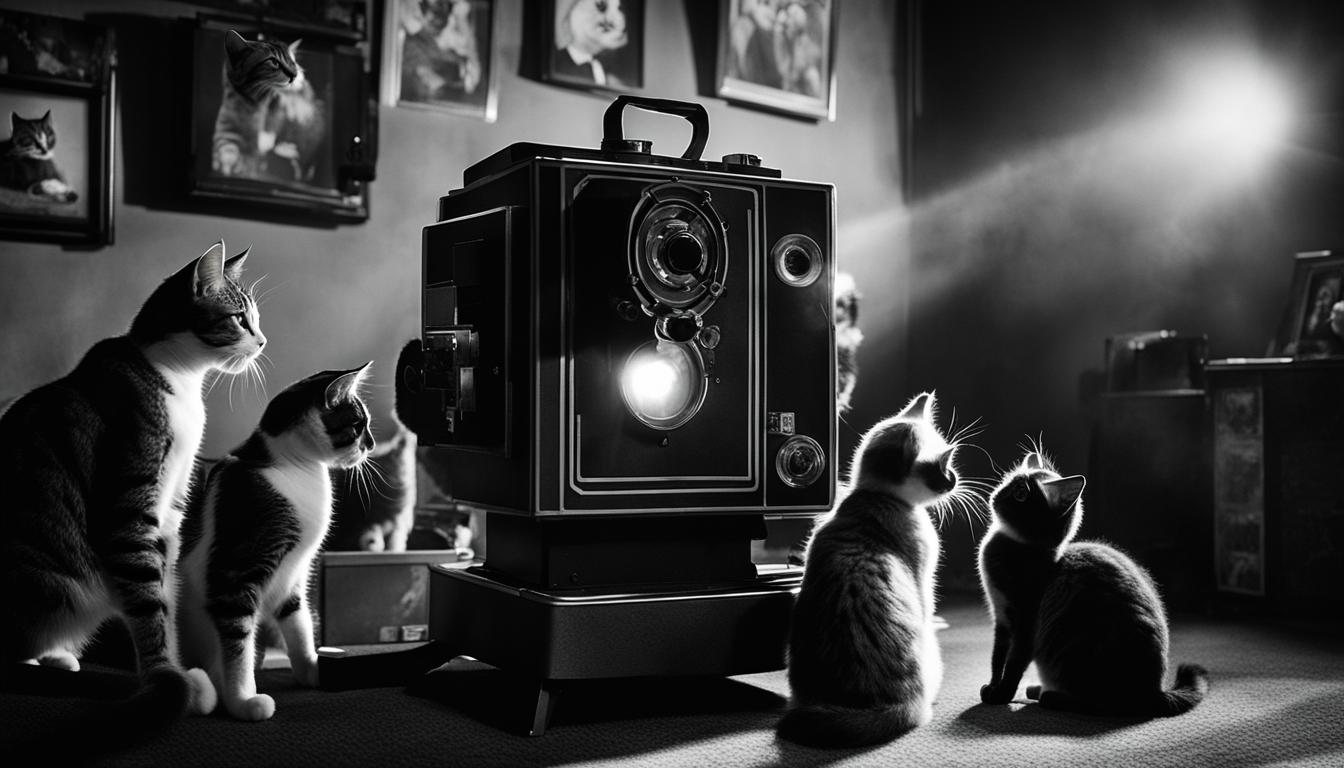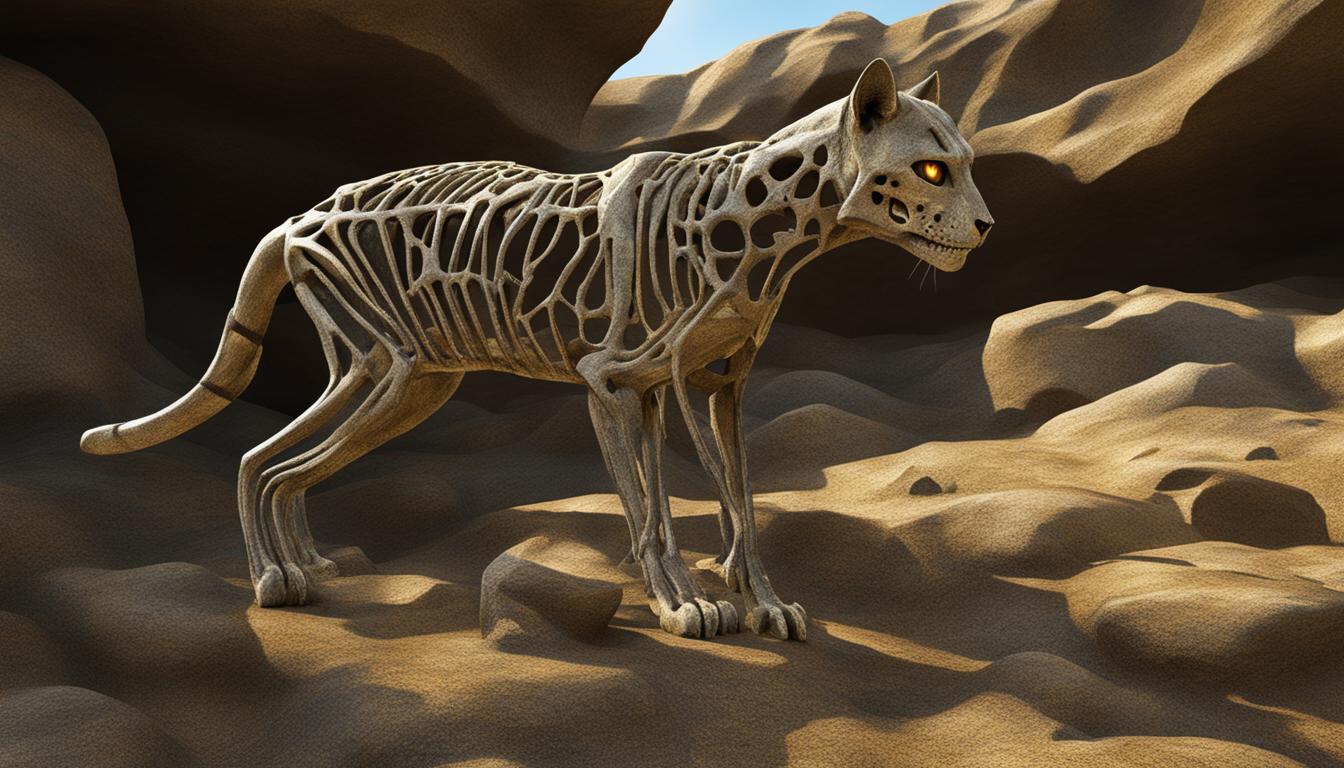Throughout history, cats have proven to be more than just fluffy companions. These cunning creatures have played a crucial role in pest control, showcasing their natural ability to keep rodent populations in check. Join me as we delve into the fascinating history of cats as pest controllers and uncover their rise as formidable foes to vermin.
Key Takeaways:
- Cats have been used for centuries to control rodent populations, making them an integral part of pest control history.
- The historical use of cats in controlling plagues showcases their impact on civilization and human survival.
- Cats’ role as efficient rat catchers has been recognized in various settings, including agriculture and urban areas.
- The rise of cats in pest control can be traced back to ancient civilizations, such as Ancient Egypt and Ancient China.
- While cats are effective pest controllers, there are alternative methods available that may be more environmentally friendly.
The Evolution of Cats as Pest Controllers
The domestication of cats is a fascinating journey that began thousands of years ago. Ancient China holds evidence of cats living harmoniously with humans, drawn to farmsteads due to the abundance of rodents found in grain stores. These early cats played a crucial role in pest control in agricultural settings, marking the beginning of their evolution as natural pest controllers.
Ancient Egypt further solidified the role of cats in pest control, where they enjoyed a revered status. Cats were worshipped and mummified, symbolizing protection and guardianship against pests like rats and snakes. These feline protectors were often depicted in art, immortalizing their presence and importance in ancient Egyptian society. Their association with pest control showcased the early recognition of their innate abilities to keep rodents at bay.
“Cats are the runes of beauty, invincibility, wonder, pride, freedom, coldness, self-sufficiency, and dainty individuality – the qualities of sensitive, enlightened, mentally developed, pagan, cynical, poetic, philosophic, dispassionate, reserved, independent, Nietzschean, unbroken, civilised, master-class men.” ― H.P. Lovecraft
As cats continued to evolve alongside humans, their reputation as skilled pest controllers grew. Their hunting instincts and ability to control rodent populations became essential in medieval agriculture. Referred to as barn cats, they played a critical role in keeping mice populations in check on farms. Farmers celebrated their prowess and did not feed them, recognizing that their natural instincts were sufficient for effective pest control.
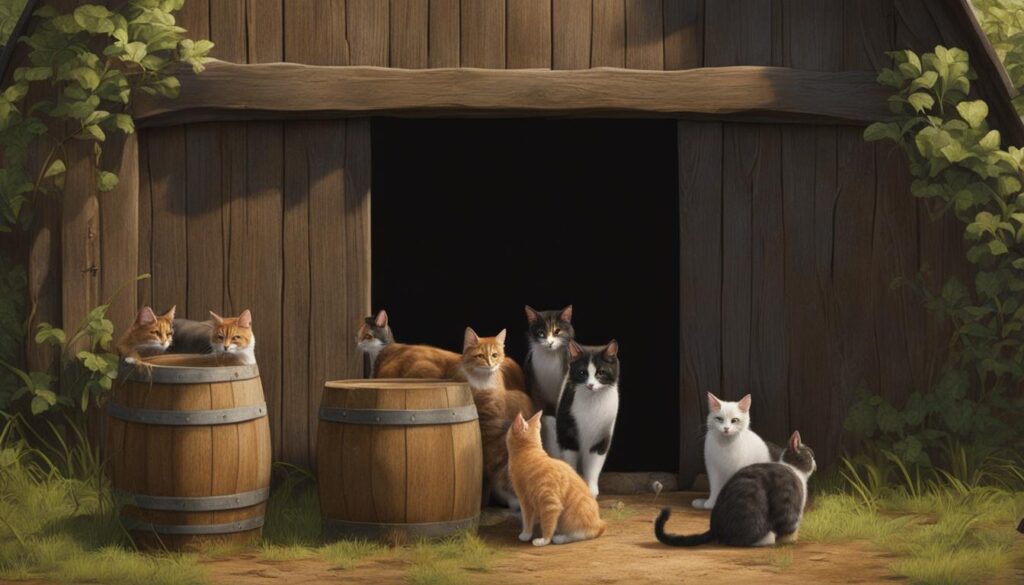
The Role of Cats in Ancient China and Egypt
| Ancient China | Ancient Egypt |
|---|---|
| Cats attracted to farmsteads due to abundant rodents in grain stores | Cats worshipped and mummified, depicted as protectors against pests |
| Early recognition of cats as natural pest controllers | Cats revered for their ability to keep rodents at bay |
The evolution of cats as pest controllers has a rich history, spanning ancient civilizations and agricultural practices. Their domestication and symbiotic relationship with humans have allowed them to fulfill their natural role in pest control, shaping the course of civilization and solidifying their place as valuable allies in the battle against pests.
Cats in Medieval Agriculture
During the Middle Ages, cats played a crucial role in pest control, particularly on farms. These feline companions, known as barn cats, were highly valued for their ability to control rodent populations, especially mice. Medieval farmers recognized the innate hunting skills of cats and relied on them to protect their grain stores and livestock from the damaging effects of pests.
In fact, cats were esteemed in medieval society for their prowess in mice control. They were even celebrated in bestiaries, popular books of the time that depicted and described various animals. These books often portrayed cats as skilled and intelligent creatures, showcasing their ability to keep rodent populations in check. Farmers understood the benefits of having barn cats as part of their agricultural practices.
Barn Cats and Medieval Farming Practices
Medieval farming practices created an environment conducive to rodent infestations. Stored grain and crops provided ample food sources for mice and rats, posing a threat to the farmers’ livelihoods. Cats, with their natural hunting instincts, became indispensable allies in the battle against these agricultural pests.
| Benefits of Barn Cats in Medieval Agriculture | Examples |
|---|---|
| Effective rodent control | Cats’ hunting skills kept mouse populations in check, preventing damage to stored grains. |
| Low maintenance | Cats required minimal care and were self-sufficient, making them ideal for farm environments. |
| Non-toxic pest control | Unlike chemical pesticides, cats provided a natural and environmentally friendly solution to rodent infestations. |
“Cats were indispensable in medieval farming communities. Their skill in hunting rodents ensured the survival of crops and livestock, making them highly valued companions on the farm.” – Anonymous
Barn cats not only served as effective pest controllers but also provided companionship to farmers. Their presence offered a sense of security and camaraderie in an often lonely and demanding profession. Cats became an integral part of the medieval farming landscape, their importance immortalized in literature and folklore.
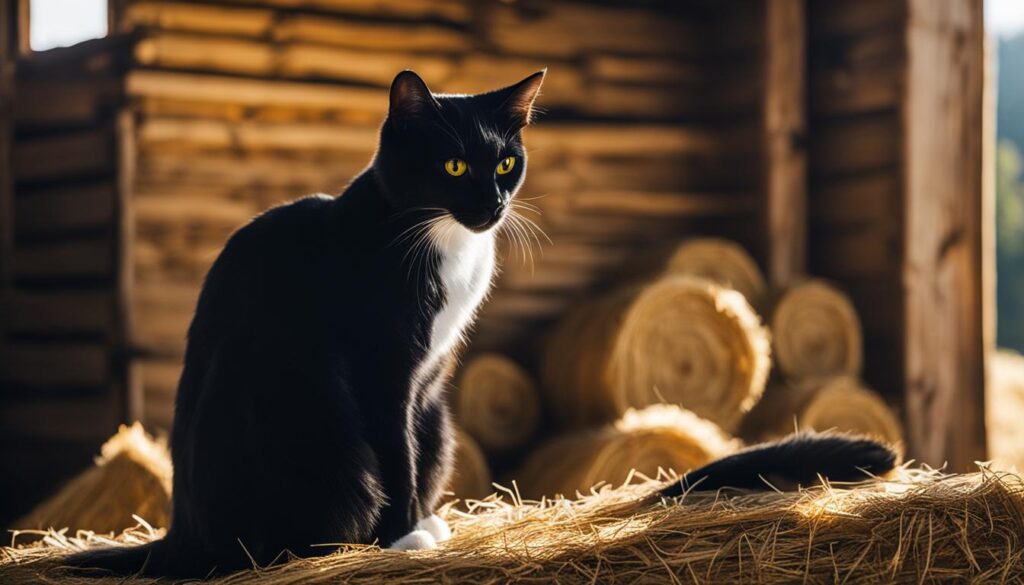
Medieval farming practices may have changed over time, but the role of cats in pest control remains relevant and valuable even in modern agricultural settings. The partnership between humans and barn cats continues to provide a sustainable and natural solution to rodent infestations, carrying on a tradition that originated centuries ago.
The Modern Role of Barn Cats
In today’s world, farm cats continue to play an important role in pest control. These hardworking felines are often adopted from shelters and placed on farms to help control rodent populations. Unlike house cats, barn cats are not socialized to live indoors and form their own tight-knit communities on the farm. Their natural hunting instincts and ability to keep rodents at bay make them valuable assets in modern pest control efforts.
One of the main benefits of using barn cats for pest control is their innate ability to hunt and catch rodents. Unlike traditional pest control methods that may involve chemical pesticides or traps, barn cats offer a natural and environmentally friendly solution. They keep rodent populations in check by actively hunting and eliminating pests. This not only helps protect farm produce from damage but also reduces the need for potentially harmful chemicals.
Adopting barn cats also provides a second chance for these felines. Many of these cats come from shelters or rescue programs, where they may have been overlooked for adoption as house pets. Placing them on farms allows them to live fulfilling lives while providing a valuable service to the agricultural community. It’s a win-win situation for both the cats and the farmers.
| Barn Cats | Traditional Pest Control Methods | |
|---|---|---|
| Effectiveness | Barn cats are highly effective at controlling rodent populations through their natural hunting abilities. | Traditional methods may involve chemical pesticides or traps, which may have varying degrees of effectiveness. |
| Environmental Impact | Barn cats offer an environmentally friendly solution to pest control, reducing the need for chemical pesticides. | Traditional pest control methods may have negative environmental impacts, such as the use of harmful pesticides. |
| Cost | Barn cats can be adopted at a relatively low cost from shelters or rescue programs. | Traditional pest control methods may involve ongoing costs for the purchase of pesticides or maintenance of traps. |
Cat Communities on Farms
When barn cats are introduced to a farm, they naturally form their own communities. These communities consist of multiple cats that work together to keep the farm free from pests. The cats communicate with each other and share territories, ensuring that the farm is adequately patrolled. This communal behavior not only enhances their effectiveness as pest controllers but also creates a sense of camaraderie among the feline residents.
It’s important to note that barn cats require proper care and support from farmers. Adequate shelter, regular feeding, and veterinary care are essential to ensure their well-being. Farmers who adopt barn cats must commit to providing these basic necessities to ensure the longevity and effectiveness of their feline pest control team.
In conclusion, the modern role of barn cats in pest control is invaluable. These hardworking felines offer an efficient, natural, and environmentally friendly solution to rodent control on farms. By adopting barn cats, farmers not only gain pest control services but also provide a second chance for these cats to live fulfilling lives. The formation of cat communities on farms further enhances their pest control effectiveness, creating a harmonious balance between humans and felines in the battle against agricultural pests.
Cat-Friendly Pest Control: Environmentally Conscious Alternatives
When it comes to pest control, cats have long been recognized as effective hunters. However, there are also other options available that prioritize the well-being of both cats and the environment. By embracing cat-friendly pest control methods, we can find sustainable alternatives to traditional approaches that rely solely on feline hunting instincts.
Rodenticides, for example, are commonly used to control rodent populations. While they can be effective, they come with potential risks. Training is required for proper deployment, and there is a risk of accidental poisoning to non-target animals. Instead, we can explore methods that encourage natural pest control without resorting to rodenticides.
“By prioritizing the proper feeding of our cats, we can reduce their hunting instincts and minimize their impact on local wildlife,” says Dr. Jane Thompson, a veterinarian specializing in feline behavior. “A well-fed cat is less likely to hunt.”
Another cat-friendly approach to pest control is implementing drainage solutions. By addressing the root causes of rodent infestations, we can minimize the reliance on cat hunting. Proper drainage prevents water accumulation, which in turn discourages rodents from taking up residence. This proactive method not only controls the pest population but also creates a more sustainable environment for all.
| Traditional Pest Control Methods | Cat-Friendly Pest Control Methods |
|---|---|
| Relies solely on cat hunting instincts | Encourages responsible cat ownership |
| Potential risks of accidental poisoning with rodenticides | Reduces the use of harmful chemicals |
| May disrupt the local ecosystem | Promotes a balanced ecosystem |
By adopting cat-friendly pest control methods, we can strike a balance between effective pest management and the well-being of our feline companions. These alternatives not only reduce the risks associated with traditional methods, but they also mitigate the potential harm caused to non-target animals and the environment as a whole. As responsible cat owners, it is our duty to explore and embrace sustainable pest control practices that benefit everyone involved.
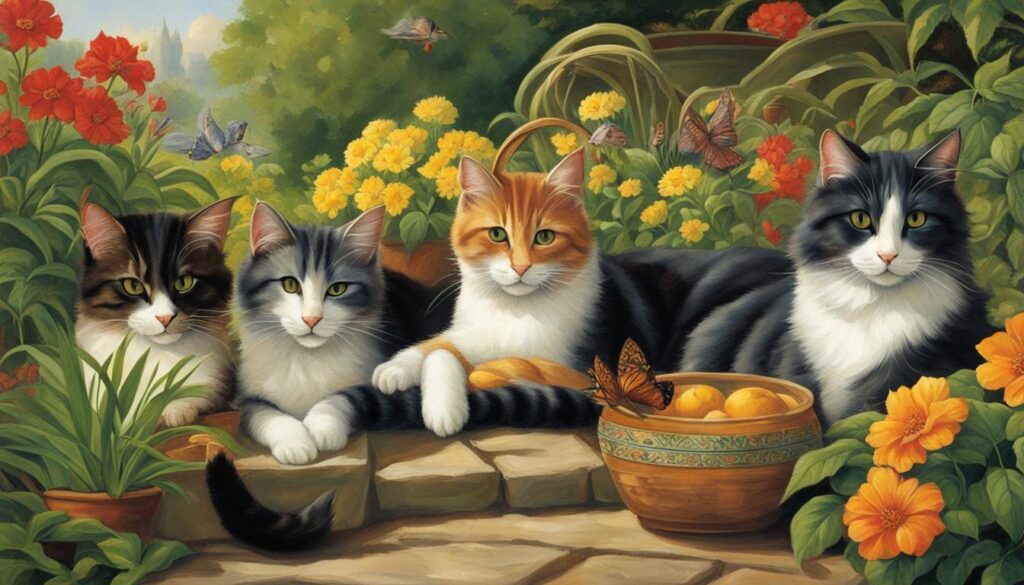
The Myth of Cats and Milk
Many people have the image of a cat happily lapping up milk from a saucer ingrained in their minds. But the truth is, this common practice can actually be harmful to our feline friends. Contrary to popular belief, adult cats are lactose intolerant, meaning their bodies cannot effectively digest lactose, the sugar found in milk.
This lactose intolerance can cause digestive issues such as bloating, diarrhea, and stomach discomfort. While cats may enjoy the taste of milk, it’s best to avoid giving it to them to prevent any potential health problems. Instead, water should be the primary source of hydration for cats.

Cats are obligate carnivores, and their bodies are designed to obtain the necessary nutrients from animal protein. They typically lack the enzyme lactase, which is responsible for breaking down lactose in milk. Without this enzyme, cats cannot effectively digest lactose, leading to gastrointestinal upset.
So, while the image of a cat enjoying a saucer of milk may seem charming, it’s important to remember that it’s not a healthy choice for our feline companions. To ensure their overall health and well-being, let’s stick to offering them water and a diet that meets their specific nutritional needs.
The Future of Cats in Pest Control
As we look ahead to the future of pest control, it’s clear that cats will continue to play a significant role in keeping our environments free from unwanted critters. With their natural hunting instincts and ability to control rodent populations, cats offer a sustainable and effective solution to pest management. However, it’s important to consider the implementation of cat management programs and initiatives that promote responsible cat ownership.
These programs can include spaying and neutering efforts to help control cat populations and prevent overbreeding. Additionally, trap-neuter-return programs ensure that feral cats are vaccinated, neutered/spayed, and returned to their habitats, where they can continue to contribute to pest control efforts. By focusing on responsible cat ownership and population control, we can strike a balance between effective pest management and the well-being of cats themselves.
Furthermore, cat adoption initiatives can provide a win-win situation for both cats and pest control. Cats that are not suited for indoor living or socialization can be adopted as barn cats, where they can thrive in their natural environment and fulfill their innate hunting instincts. This allows these cats to contribute to pest control efforts in agricultural settings while providing them with a safe and appropriate living situation.
Benefits of Cat Management Programs and Adoption Initiatives:
- Promotes responsible cat ownership
- Controls cat populations through spaying and neutering
- Ensures the well-being of cats
- Contributes to sustainable and effective pest control
- Provides opportunities for cat adoption and rehoming
By embracing cat management programs and adoption initiatives, we can harness the natural abilities of cats while ensuring their welfare. This approach allows us to address pest control needs in a responsible and compassionate way, protecting both our ecosystems and the cats themselves. As we continue to evolve, let’s remember the valuable role that cats have played in pest control throughout history and work towards a future where they can continue to contribute while being cared for and valued.
| Programs | Benefits |
|---|---|
| Spaying and neutering | Controls cat populations, prevents overbreeding |
| Trap-neuter-return | Ensures vaccination and population control of feral cats |
| Adoption initiatives | Provides suitable homes for cats, contributes to pest control |
Conclusion
So there you have it, the historical significance of cats in pest control cannot be overstated. These furry feline creatures have been natural pest controllers since ancient times, using their innate hunting skills to keep rodent populations in check.
From the well-guarded homes of Ancient Egypt to the barns of medieval farms, cats have played a crucial role in managing pests and protecting human civilization. Their ability to effectively control rodent populations has been a vital contribution to the survival and well-being of human populations throughout history.
While there are alternative methods of pest control available, the natural instincts of cats and their historical significance make them a valuable asset in managing pest populations. Their presence not only provides practical benefits but also adds a sense of charm and companionship to our lives.
FAQ
How have cats historically been used in pest control?
Cats have played a significant role in pest control throughout history. They were used as efficient rat catchers in various settings, including agriculture and urban areas. Their presence has contributed to the control of plagues and the management of rodent populations.
When did the domestication of cats begin?
The domestication of cats began thousands of years ago, with evidence of cats living in harmony with humans in Ancient China. They were attracted to farmsteads due to the abundance of rodents found in grain stores.
How were cats revered in Ancient Egypt?
In Ancient Egypt, cats held a revered status, as they were worshipped and mummified. They were depicted in art as protectors of the home and guardians against pests, such as rats and snakes.
What role did cats play in Medieval agriculture?
Cats were essential for pest control on farms during the Middle Ages. They were known as barn cats and played a crucial role in controlling rodent populations, particularly mice. Farmers often encouraged cats to hunt by not feeding them, recognizing their innate ability to keep rodents at bay.
How do barn cats contribute to modern pest control efforts?
Barn cats, as they are commonly known, are often adopted from shelters to help control rodent populations in rural areas. They form their own communities and contribute to modern pest control by hunting and keeping rodent populations in check.
Are there alternatives to cat-based pest control?
Yes, there are alternative methods available for pest control that may be more environmentally friendly. These include the use of rodenticides, proper feeding of cats to reduce hunting instincts, and implementing drainage solutions to prevent rodent infestations in agricultural settings.
Is it true that cats and milk go hand in hand?
While the common notion of cats drinking milk from saucers is often portrayed in popular culture, it can be harmful to cats. Adult cats are lactose intolerant and can become unwell if given too much milk. Water is a more appropriate drink for cats to ensure their overall health and well-being.
What does the future hold for cats in pest control?
As society continues to evolve, the role of cats in pest control may also change. Cat management programs and initiatives that promote responsible cat ownership can help ensure that cats are effective pest controllers while also being well-cared for and not contributing to environmental issues.

